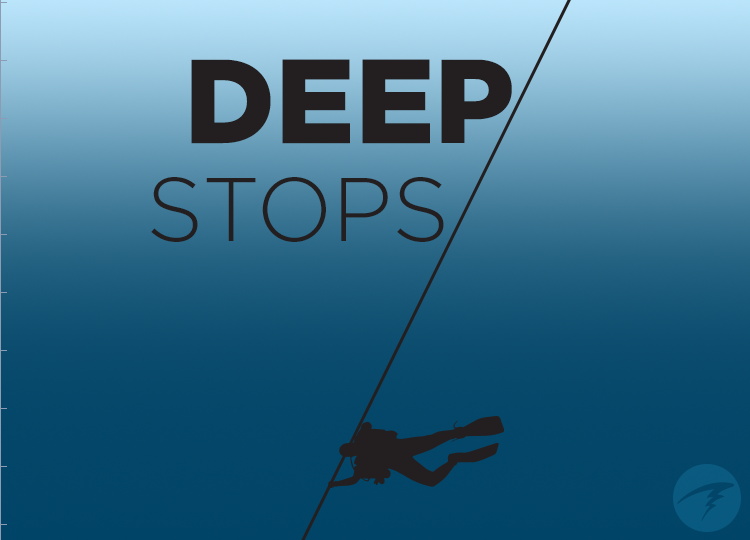Some comments I made on the old RebreatherWorld Deep Stops Thread.
Note: These comments reflect the thinking I had a couple of years ago. I have added a few references for people can look up articles I mention. In the near future I will post some comments on technical diving research that has come available since then, and how my personal practices have changed.
I’ve been asked in private communication if I would use 40/70 for all of my technical diving. I thought it might be worthwhile for me to talk about my journey to my current thinking. Keep in mind that I am a programmer and avid decompression diver. I am not a decompression scientist. This is a personal, anecdotal, opinion.

I began doing open-circuit nitrox and trimix decompression in the 90s. By the end of the 90s I had a few rebreathers and was doing a lot of decompression diving. I logged over 500 dives back then, but I haven’t kept logs for the last 15 years. The reason I mention my diving activity is for statistical reasons. I have done, and still do, a lot of technical diving. It is important to me whether my risk of decompression injury is 1/1,000 or 1/10,000. From the frequency of my DCS issues I would estimate that I was somewhere in the 1/500 range. I have had several minor DCS injuries over the years and I have probably had a slight skin rash on my stomach 10 or more times. I have been actively trying to back off the risk but it has been challenging due to the lack of hard data for our kind of diving. Scientists might refer to it as bounce decompression diving as opposed to saturation decompression diving.
Deep Stops in Technical Diving: Yes or No?
I read Dr. Richard Pyle’s speculations, The importance of deep safety stops: Rethinking ascent patterns from decompression dives. and they made a lot of sense. Deeper initial stops became quite common as a practice, and also started appearing in computers (VR3), tables, and desktop programs (VPM and GF). The early implementation of VPM was apparently too aggressive so it was modified with VPM-B and then VPM-B/E. At that point, I thought all of the solutions were about equally likely to be optimal. I watched presentations by Dr. Bruce Wienke, and later by Dr. Wayne Gerth on the value of deep stops. It all seemed reasonable and the proponents made strong statements in favor of deeper and longer stops.
Then the Navy did their study. I was at the UHMS Deep Stops Workshop in Salt Lake City June 24-25, 2008 where the study was presented. It was a VERY controversial meeting. Dr. Wienke presented his case for deep stops and Dr. Gerth, who was also promoting deep stops with Dr. Wienke a year earlier, was presenting the Navy study. Dr. Gerth described the findings and how the results did not support deep stops, as he had expected.
Then it got interesting. We go to a lot of these conferences, and when the microphones on the floor are opened for questions you might see a couple people line up to ask questions. When they opened for questions to discuss the findings of the conference, there were immediately 20 people at the microphone, and some of them clearly had strong feelings.
Dr. Simon Mitchell was the moderator, tasked with finding a consensus after all of the presentations. Lynn and I had never met him before but were really impressed with how he handled the group. Regardless of the position of the speaker, Dr. Mitchell first clarified the position, typically by rephrasing it, and then offered suggestions about how it could be incorporated in the position statement. If at any time he was trying to influence the outcome of the discussion, it certainly didn’t seem like it to us.
In the end the position statement was very weak, neither endorsing nor discarding deep stops.
After this conference, I was still on the fence. I was happy with offering GF and VPM-B with GF surfacing with our products. The Navy study seemed compelling since it was actual dive testing, but there were so many scientists that weren’t convinced that it seemed to me the jury was still out.
Bubble and Blood Studies for Technical Diving
The next direction I took came from discussions with Dr. Neal Pollock. He and his team from DAN were doing bubble and blood studies with trimix divers. This DAN program is ongoing, and they continue to collect data. I observed it for several years at InnerSpace in Grand Cayman. These were aggressive testing regimens with retests every 20 minutes starting on the boat just after surfacing and then long enough afterwards to see a safe pattern. Many of these divers experimented with their conservatism during the test series.
A couple of years ago, a group of divers started talking about adjustments they were making and the results. Phil Short and I were among the people at the table. The consensus seemed to be that everyone was padding their shallow stops to reduce bubble scores. I have been padding my shallow stops for a couple years now with something like 30/70 or 30/75 with good results.
Now we come to the Deep Stops threads:
I began reading with an open mind. However, as Ross Hemingway kept coming up with challenges and people then came back with strong analysis, my views changed. As far as I can tell, Ross offered every possible objection about shape, gas transfers, and red herring effects. In each case this prompted another level of analysis that changed another question in my mind to a confident belief.
The level of analysis in this thread by Dr. Dollette and Kevin Watts was an education. The moderation, summation, and refocusing by Dr. Mitchell has created one of the most informative threads in the history of RBW in my opinion.
After this I was using 40/70. The 70 drifted out to 75 or even 85 over time as I became more confident that the shallower first stop was making a difference.
Update - May 13, 2019
John Adsit did a nice summary presenting information gathered in recent studies. You can read his article here: https://tecrec.padi.com/2019/04/22/evolving-thought-on-deep-decompression-stops/
---

Written by Bruce Partridge
Founder of Shearwater Research Inc.





